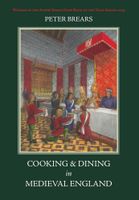Advertisement
Planning for Cooking
Appears in
By Peter Brears
Published 2008
Although many medieval castles and houses are impressive in terms of their architecture, defensive strength and sheer physical mass, their primary purpose always remained emphatically domestic. Unless they could provide the basic shelter, warmth and constant supplies of food and drink required by all inhabitants, they were virtually useless. The creation of workable and efficient service rooms was therefore a matter of considerable importance, and one which required both ingenuity and a thorough knowledge of domestic management. Medieval buildings are usually attributed either to those who commissioned them or to individual architects, since theirs are the documented names. However, observation of the design of the service rooms strongly suggests that a further group was perhaps equally influential – the professional household managers of the counting house. Their meticulous records and operational manuals reveal the existence of sophisticated organizational systems, carefully designed to exert the closest controls over staff and materials, and also to maintain strict hierarchies. Whenever a property was either newly built or remodelled, these were the people who actually collected and dispensed the funds, including those paid to the architect and builders. This placed them in an ideal position to influence the design of the new work, ensuring that it would incorporate every feature which would ease their future workload.

